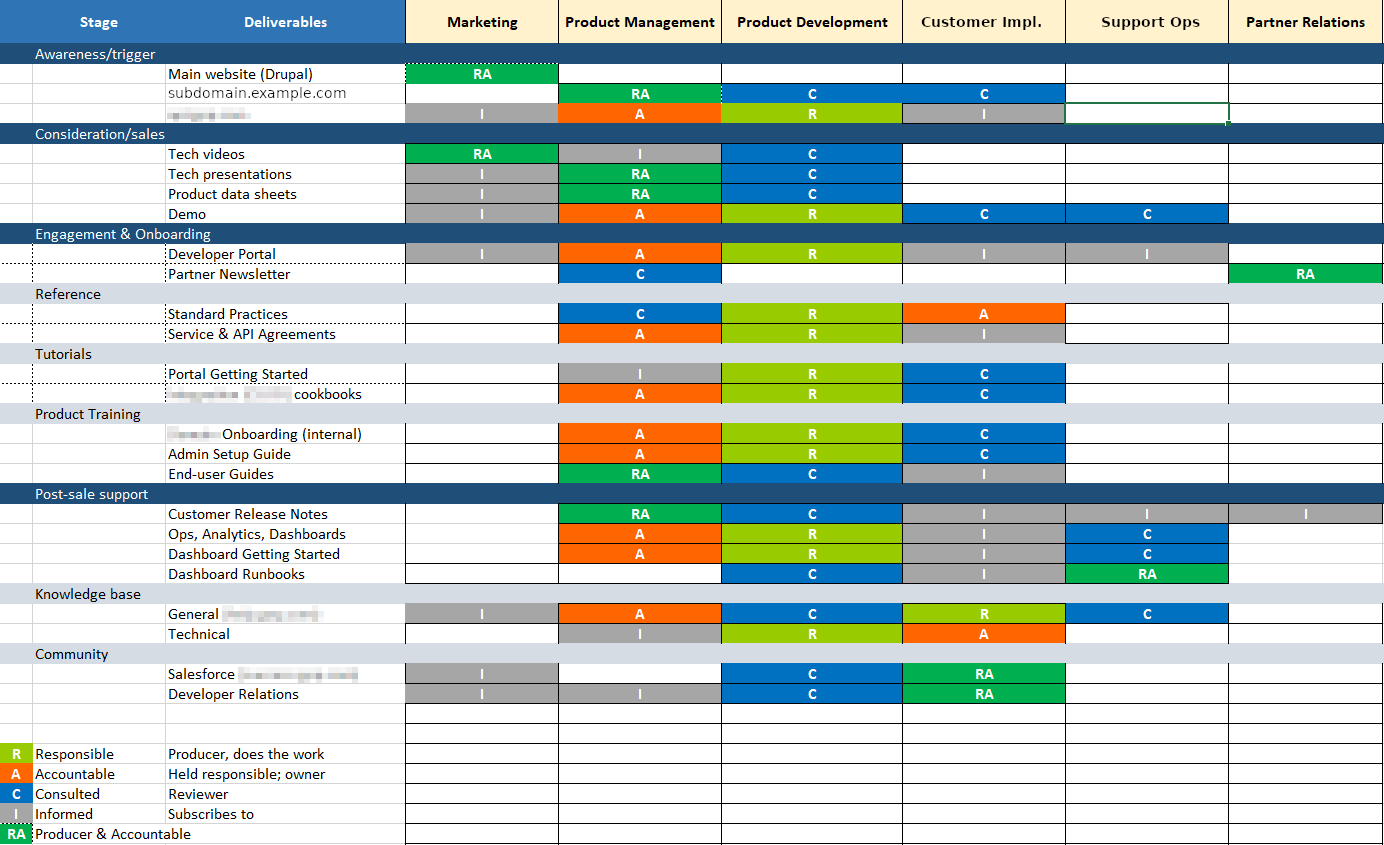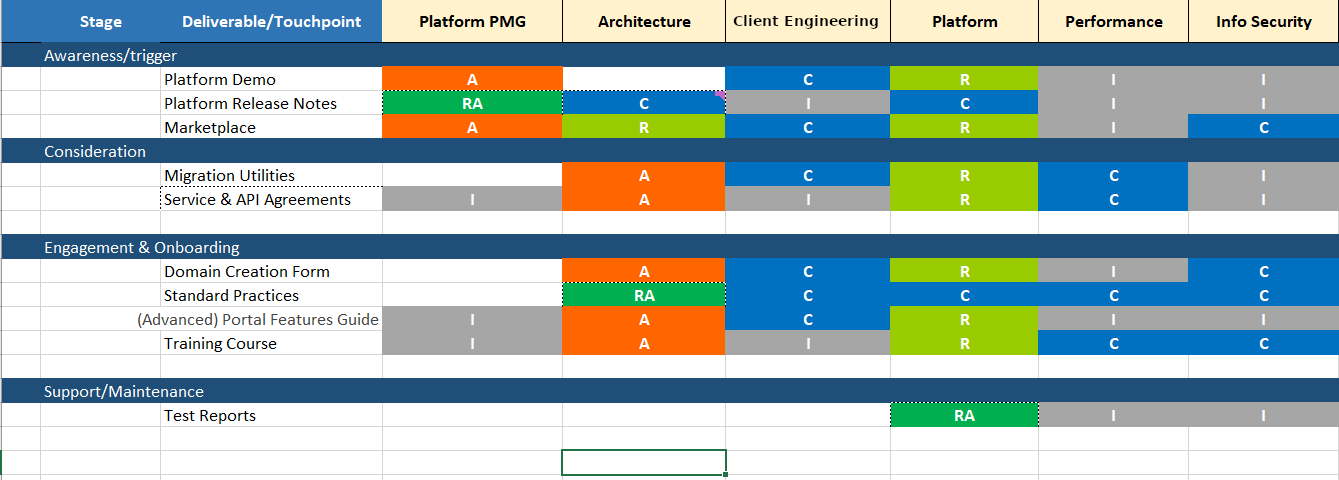Use a matrix to show the value of a technical writer
Technical writing ain’t sexy. You don’t produce numbers to brag about, and words are cheap. The work itself is like being forced to eat vegetables.
For us humble tech writers, it’s sometimes difficult to justify why our jobs are essential. So, as writers do, meet the audience halfway and let the writing do the talking.
Communicate with managers #
You know what is sexy? Charts. (I find it hard to swallow this lesson, because I don’t give much credence to charts.)
The truth is, product and project managers live in spreadsheets. Actually, almost every corporate worker lives in spreadsheets. If I knew this, I would’ve really brushed up my Excel skills.
This article by Qing “Sapphire” Wang, “Whole Product” Technical Comm, describes how you can organize your Content Strategy at a high level. I really liked her explanation. Her template is a combination of The Buyer’s Journey on the Y-axis, and the Responsibility Assignment Matrix on the X-axis. Put them together, and you can plot how technical writing fits with psychology.
I’ve tried my hand at my own matrix:

This chart politely asks, “Do we really need another whitepaper?”
Once you have a high level overview, you will know where your content belongs. If there’s an imbalance between marketing brochures and operational instructions, it becomes obvious. Technical writing is a pillar of sales, and skimping out on it will lead to a trainwreck.
1. The Buyer’s Journey is a way to define the stages of a decision-making process. #
- Awareness -> “Houston, we’ve got a problem.”
- Consideration -> Researching and comparing potential solutions.
- Decision -> Determine the best-fit product, based on feasibility and tradeoffs.
- Post-sales support -> How to actually use the product.
Technical writing comes into play for 2. Consideration, 3. Decision, and 4. Support.
- “How good are the instructions?”
- “Will the person responsible for implementation actually be able to complete the task?”
- “Will adequate documentation and post-sales support reduce friction and make change management easier?”
2. Responsibility Assignment Matrix, or RACI, is a way to define scope and effect: who will actually do a task, and who benefits from the completion of tasks. #
| Scope | Extended Note |
|---|---|
| Responsible | The producer of the work |
| Accountable | Whoever is held responsible for its outcome |
| Consulted | A peer-reviewer |
| Informed | A subscriber to this deliverable/touchpoint |
3. Extra Considerations #
The chart will never be perfect. For an enterprise, there are more departments than I can count on my fingers. I don’t actually know what kind of work other employees do, so it’s a great way to push myself and talk to people outside of my department. For example, your product demos might actually be under Pre-sales, or some kind of Sales Engineering team, to setup and showcase.
For my immediate contacts within the Engineering departmnet, I made another matrix that splits the teams granularly:

Publication Targets #
In addition to the RACI/Buyer’s Journey combo, I made a list to keep track of publication targets, showing where content can be accessed and by whom.

I wish to never touch SharePoint ever again.
Documentation is a business courtesy. #
If you are an external business, you have salaries to pay, some of them very costly. When your workers encounter a product with terrible documentation, they get blocked, then submit a ticket to outside support, then sit on their ass for a couple days.
Skimping on documentation saves your company time, but it wastes everyone elses’. Stop wasting people’s time. Don’t be that kind of company.